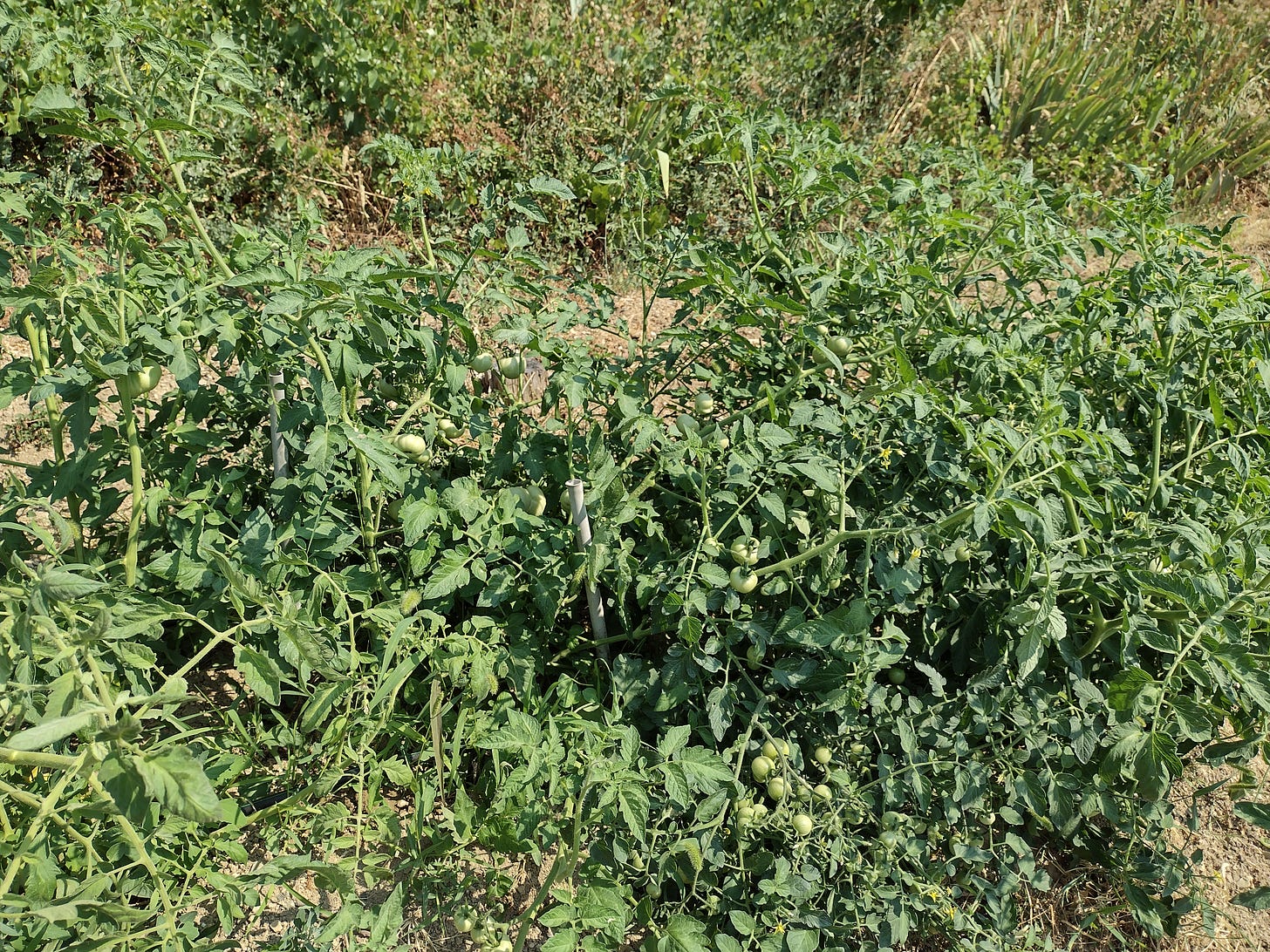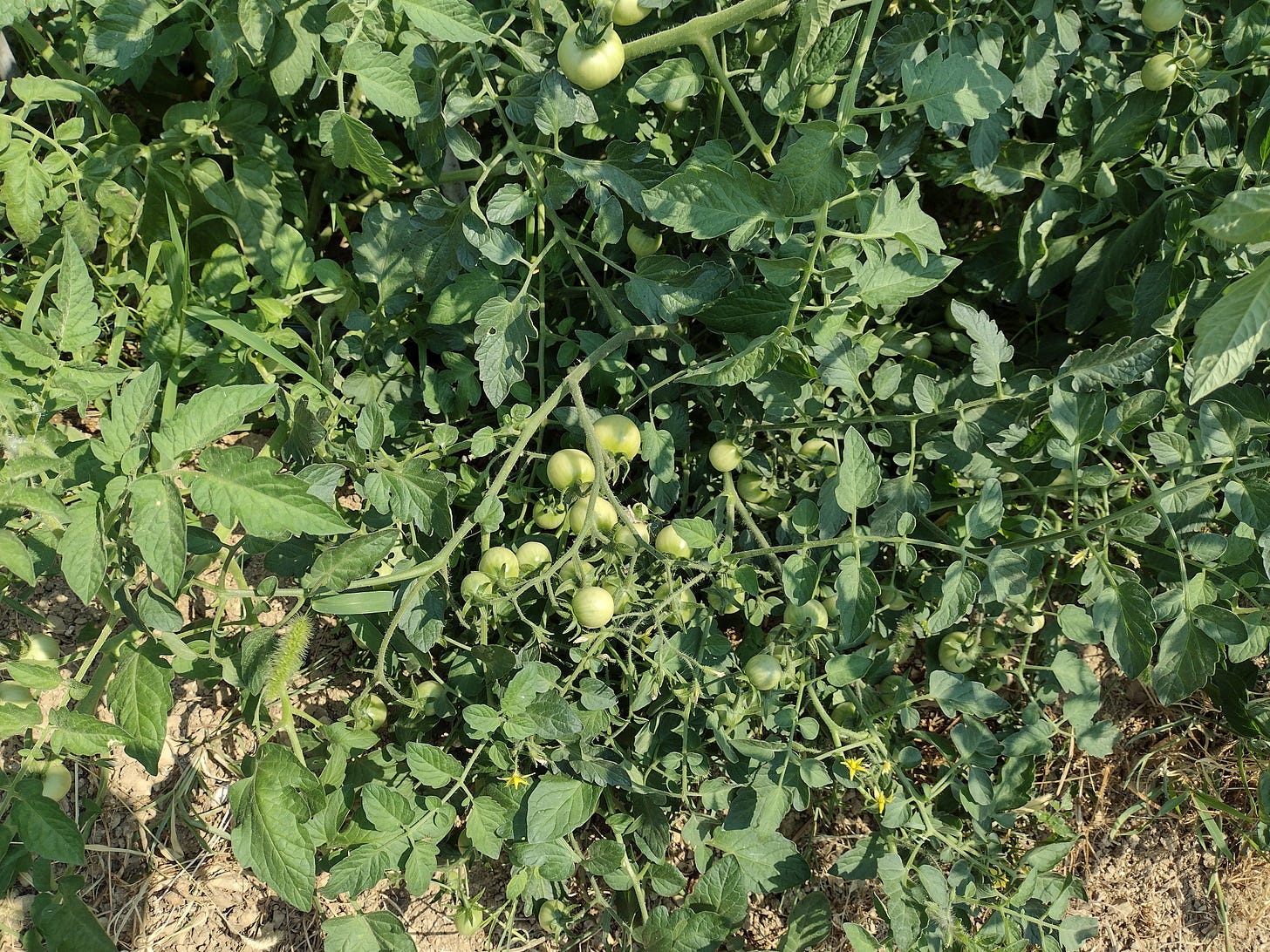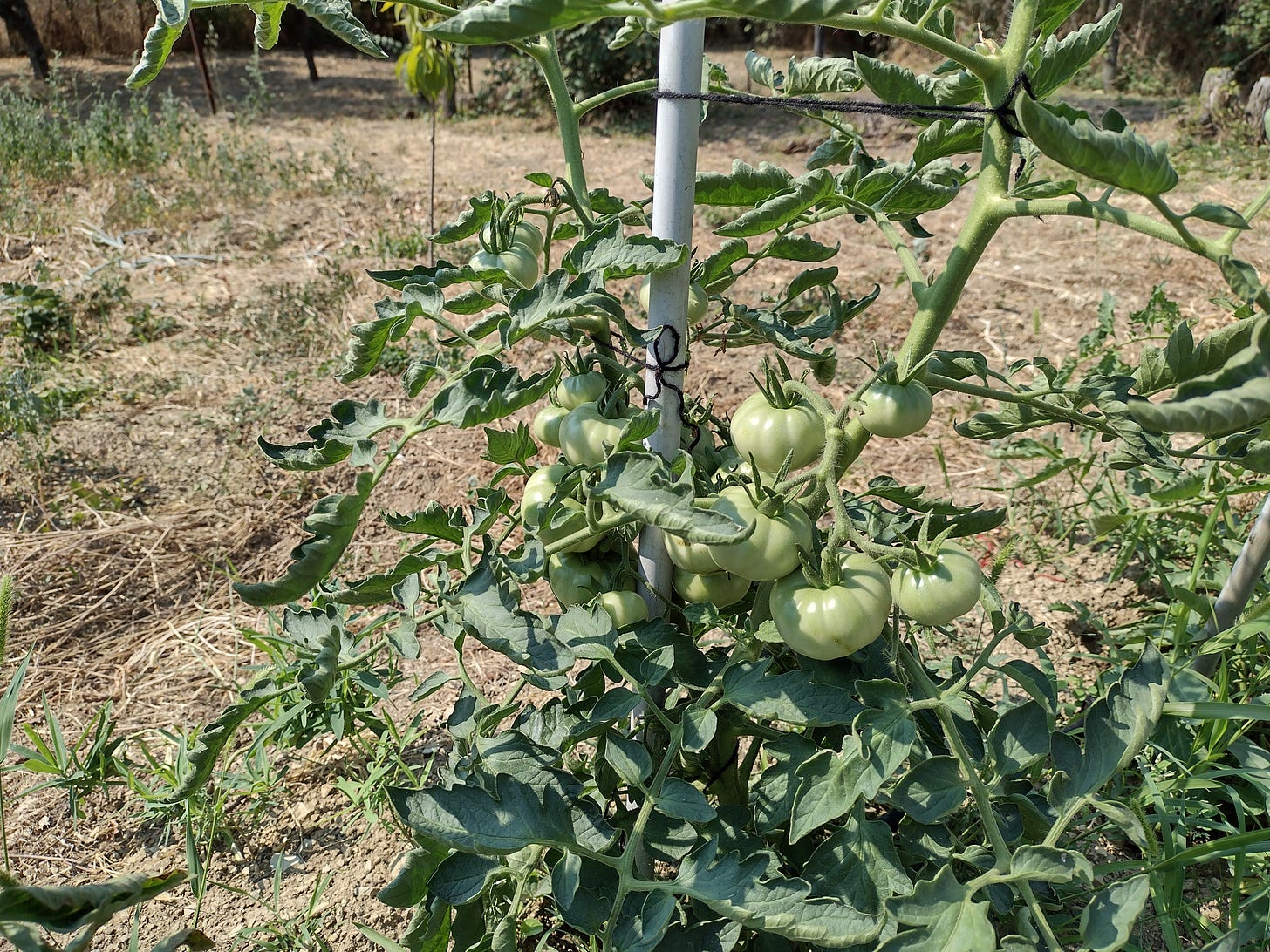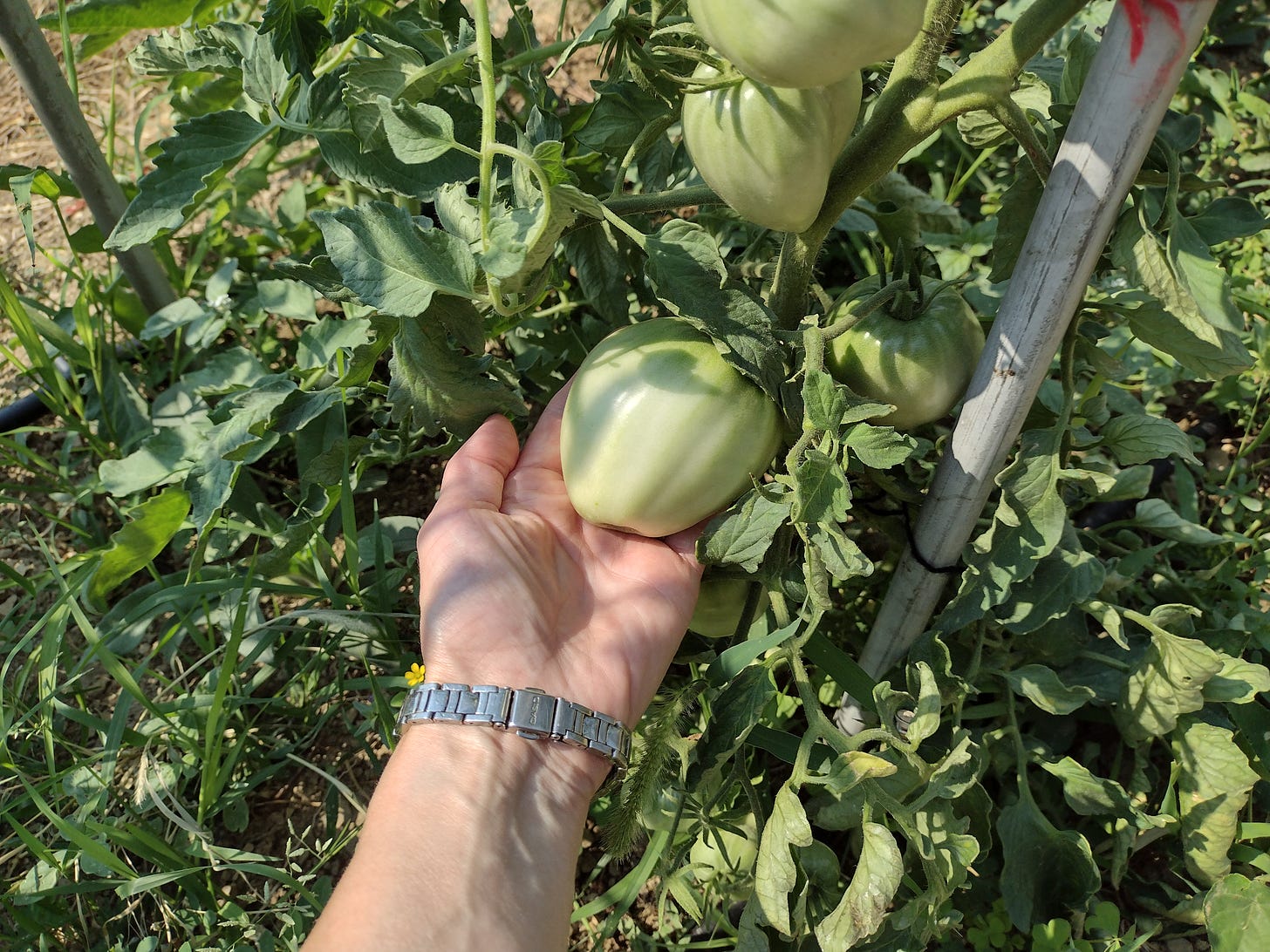For three years now we’ve been hard at work growing tomatoes. During these three years we learned a lot. This year, having accumulated all this knowledge, we put it to work. Here’s a summary.
#1 Drip irrigation
The “Tomatoes don’t need to be watered every day” may work in wetter parts of the world but here, it’s water every day or puny harvest. For an obscenely long time, we watered our tomatoes with a hose. One reason was that we bought the above advice in full and another reason was that Irina considered drip irrigation unaesthetic. Must have been the summer heat. Tomatoes need water, lots of it, regularly. The end. (Note: the image below is tomatoes only, no weeds. There’s no space for weeds.)
#2 Homemade fertilisation
Every time we plant our tomato seedlings we follow the same procedure: fill the hole with compost, add a tablespoon of granulated NPK, mix well, plant tomato, water. For two years, we then added a teaspoon of NPK to every plant occasionally because it looked so easy. But indispensable as NPK is, we found it wasn’t doing much for our tomatoes. And then a miracle happened.
It turned out the family hairdresser was heavily into gardening, so she shared her fertiliser recipe with us. In short, it’s baker’s yeast dissolved in water. Although no fertiliser in itself, the yeast apparently makes it easier for plants to absorb nutrients from the soil. As in, a lot easier. As in, so much easier, the plants go crazy… especially if you overdo the fertilisation.
The recipe, enriched with the Slav secret ingredient:
For a 5-litre bucket
5 g of dry baker’s yeast, dissolved in a couple of litres of water
100 g ground dry egg shells, tossed in 2 l of boiling water, stirred, removed from stove and let sit for a day. Add the egg shell water to the yeast mixture, scatter shells around random plant for that unique look.
3 drops of iodine. Apparently iodine does wonders for plant life.
Fill the bucket to 5 l and start fertilising. Works equally well on other plants as well.
Per-plant norm: 200 ml, on wet soil
Frequency: depends on the soil. Some say no more than three times per season. Some say once every two weeks. The Slavs did once a week — until we checked with the expert advice and learned this was too much.
As you can see, no plant has suffered as a result of this. But too much yeast fertilisation exhausts the soil, and we don’t want that. Good thing our per-plant norm was half of what the experts advise. But we’re still leaving that patch fallow or planting pulses next year to help the soil recover.








Adding decomposed granite to your soils will help replenish any nutrients either missing of lost during the growing season
This is exactly what I need for my adventure in growing tomatoes. In the tropics! Thanks for the recipe.